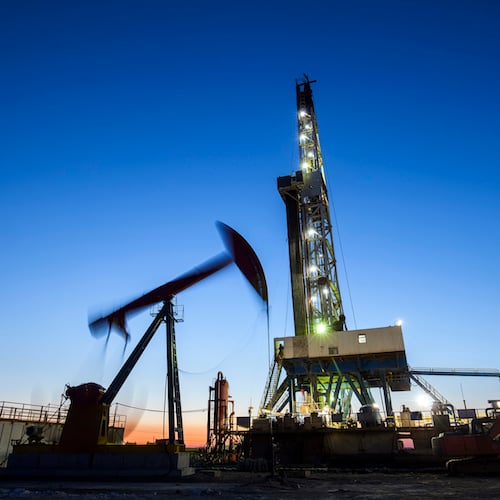Energy
US Produced Over 10 Million Barrels of Oil a Day in February: EIA

Published:
Last Updated:

The U.S. Energy Information Administration (EIA) on Tuesday released its Short-Term Energy Outlook (STEO) for March with the not completely stunning news that U.S. crude oil production averaged 10.3 million barrels of crude oil a day last month, up by 230,000 barrels from the January total. In 2017, U.S. crude production averaged 9.3 million barrels a day for the entire year.
For all of 2018, the EIA estimates U.S. crude production will average 10.7 million barrels a day. If that happens, 2018 will surpass the 1970 record annual average production of 9.6 million barrels a day. For 2019, the EIA is forecasting U.S. production to average 11.3 million barrels a day.
Worse news is in store for OPEC and its partners like Russia that have shaved crude oil production by 1.8 million barrels a day and whittled global inventories by half. According to the EIA, global inventories of petroleum and other liquid fuels declined by 600,000 barrels a day last year. The agency sees global inventories rising by 400,000 barrels a day this year and a further 300,000 barrels in 2019.
West Texas Intermediate (WTI) crude oil prices are forecast to rise from an average of $50.79 a barrel in 2017 to $58.17 this year before moderating to $57.51 in 2019. Prices for Brent crude are forecast to be about $4 a barrel higher for both this year and next.
After reaching a peak differential of about $7 a barrel with Brent in late December, WTI was priced just $3 a barrel below Brent on March 1.
The STEO also notes that natural gas pricing is under pressure and that the probability that July 2018 futures will move above $3 per million BTUs fell to 28% on March 1. Natural gas for April delivery traded at around $2.75 in the noon hour Tuesday.
WTI crude oil for April delivery opened about flat Tuesday at $62.59 a barrel and recently traded down about 0.2% at $62.46. The January 2019 futures contract traded at $58.49, reflecting traders’ concerns that rising U.S. production will keep downward pressure on prices well into the future.
A financial advisor can help you understand the advantages and disadvantages of investment properties. Finding a qualified financial advisor doesn’t have to be hard. SmartAsset’s free tool matches you with up to three financial advisors who serve your area, and you can interview your advisor matches at no cost to decide which one is right for you. If you’re ready to find an advisor who can help you achieve your financial goals, get started now.
Investing in real estate can diversify your portfolio. But expanding your horizons may add additional costs. If you’re an investor looking to minimize expenses, consider checking out online brokerages. They often offer low investment fees, helping you maximize your profit.
Thank you for reading! Have some feedback for us?
Contact the 24/7 Wall St. editorial team.